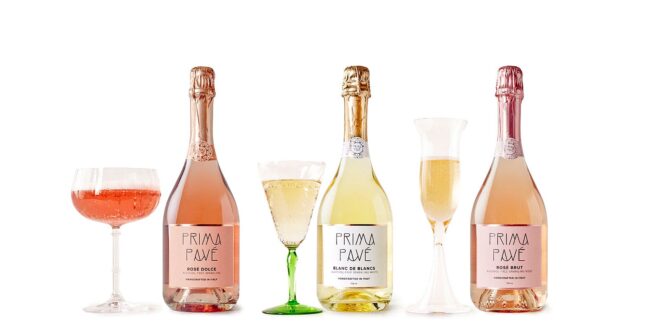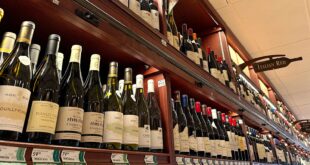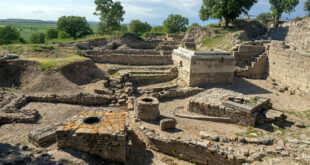[ad_1]
Over lunch at Slanted Door in Napa, Bouchaine winemaker and president Chris Kajani of Carneros is pouring a glass of something new—Bouchaine’s first vintage-dated, estate grown de-alcoholized wine, a 2023 rosé of Pinot Noir. “The 2023 vintage was not a shy vintage,” says Kajani. With a big harvest and a surplus of grapes, they decided to dip their toe into the de-alcoholized category. It’s a good match with Slanted Door’s Vietnamese cuisine, with mineral and saline notes and a touch of watermelon rind on a tight, juicy frame.
“We definitely have people that come [to the tasting room] that are moderating or sober,” Kajani says. “We really see it in events. More and more, they don’t necessarily want to drink a Diet Coke. It’s fun for us to be able to offer a wine to folks that are either not drinking or trying to drive back to San Francisco to go somewhere afterward. I liken this to continuing just to be inclusive and having something to offer people who are moderating, sober, curious—whatever it is. We want everybody to feel welcome.”
A growing number of winemakers are moving into the category of de-alcoholized (DA) wines, and it appears the movement is here to stay, especially as the offerings continue to improve and grow. According to data from Impact Databank, a sister publication of Wine Spectator, wines without alcohol are selling at double-digit rates, outperforming other wine types. The total de-alcoholized wine market amounted to more than a million cases sold in the United States in 2024.
Napa vintners Aaron Pott and Stephanie Honig partnered together to create the Missing Thorn lineup of DA wines, including a red, rosé and a sparkling all made from Barbera, and a white wine and sparkling offering made from Albariño. Pott is best known for his classic Napa wines, but with this new project he’s looking to put premium DA wines on the market.
“One of the trends you see is that people drink less, but drink better, right?,” says Honig. “They’re not drinking a bunch of crap. So they want [DA wines] to taste good. If you’re sitting there drinking something as an alternative that doesn’t taste good, what’s the point?”
In addition to startup producers, there are number of established wineries worldwide getting into the DA space, and growing. There’s Giesen in New Zealand, Torres in Spain, Mionetto from Italy, Washington’s Waterbrook, Wolffer in New York, among others. Even larger companies are getting to the game, such as LVMH and its new project, French Bloom.
“There’s lot of doom and gloom around wine right now,” says Daniel Stiller, the CEO and Founder of Better Rhodes, an online retailer of alcohol-free beverages. “But the idea that these people who are drinking non-alc wine are in any way a threat … Here are people who want to drink wine—they really want to drink wine. The only part they don’t want is the alcohol part.”
The opportunity for the wine industry is clear. But is there a danger it’s chasing what could be a passing fad? Or is this a trend worth focusing on?
How Do You Remove Alcohol from Wine?
Non-alcoholic (or NA) wines are different from de-alcoholized (or DA) wines, but it’s understandable why the terms are sometimes used interchangeably. NA wines were never fully wines to begin with. They are made from non-wine ingredients like juice, tea or kombucha that are mixed together to form a wine alternative. They aren’t trying to mimic specific wines, but give an approximation to wine. One popular brand, Blurred Vines, makes a sparkling NA called Spark that is a cold-brew botanical blend of guayusa, black and green tea, juice from red currants and strawberries, and fermented apricot and white grape juice concentrates, with botanical extracts of hibiscus, schisandra berry and cayenne pepper and other elements.
DA wines are fermented and then have the alcohol removed. Some prefer the term “alcohol removed” to…
[ad_2]Source : https://www.winespectator.com/articles/winemakers-and-dealcoholized-wine



